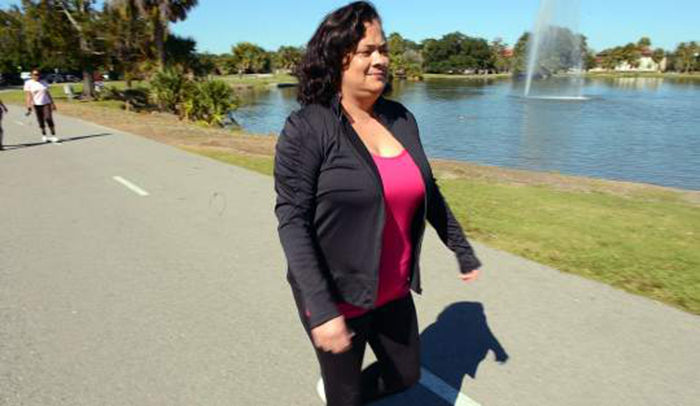Lisa Jones knows what walking can do.
Jones, of New Orleans, joined a walking group about a year and a half ago. She enjoyed both the social and fitness aspects of the workout, lost seven pounds and then did what a lot of people do. She quit.
When Jones went in for her physical recently, the 54-year-old was in for a wake-up call. For the first time in her life, Jones had blood work come back with unfavorable results.
“When I first started walking, I just wanted to lose weight and have my clothes look good. I knew the activity would benefit my health, but I took my health for granted. My lab numbers were always good,” said Jones, whose first checkup after she stopped her walking program revealed that she was now pre-diabetic and had high cholesterol.
So she is lacing up her walking shoes again at the Ruth U. Fertel Tulane Community Health Center on Broad Street and hitting the walking path with her old group the Soul Steppers, part of an initiative by AARP Louisiana to help individuals improve health outcomes.
A healthier life can be as simple as putting one foot in front of the other.
Simply by walking, you can manage weight, reduce stress, regulate blood pressure, strengthen bones and muscles, increase self-esteem, and lower the risk of heart disease, diabetes and cancer.
The most recent research says women who walk seven hours a week reduce their chances of developing breast cancer by 14 percent. And if that’s not enough to get you moving, health experts say if you look better, feel better and sleep better, you have a better outlook on life.
“When I first joined the Soul Steppers, it was all about vanity,” Jones said. “Now I’m more committed than ever because it’s for my health. I want to feel good inside-out.”
The recommendation from the Centers for Disease Control and the National Institute of Health is that every American adult engage just about every day in 30 minutes or more of moderate-intensity physical activity. Due to its low impact, walking is the most popular way to achieve this goal; it is estimated that six out of every 10 adults walk for exercise. The ideal approach is to walk 2 miles a day at a brisk pace (about 4 miles an hour). But walking is tailored to the walker, who should maintain a stride and speed that is comfortable.
If you are a true beginner when it comes to a walking program, there are five simple steps to getting started, says Gini Davis of Crescent City Physical Therapy, who also serves as the training coordinator for the Crescent City Classic:
– Just start. Walk at a comfortable pace. Record your time and distance during the first week to establish a baseline and see where you are. This is not a competition with others. Use this week of walking to determine your starting point as a walker.
– Be aware of your posture. Stand up straight and look straight ahead. Keep your head lifted, your core (the muscles in the center of your torso) engaged and your shoulders relaxed. Swing your arms naturally. Choose a comfortable, natural stride. You can increase time and speed as you progress.
– Let your breathing determine your pace. If you can’t carry on a conversation while walking, slow down. Once you establish a walking routine, your “talking pace” will improve.
– Check with your doctor before starting any exercise program. If you are afraid of falling, ask your physician for a referral for a balance evaluation by a physical therapist (for older walkers, this is usually covered by Medicare). If you cannot stand on one leg for 30 seconds, you are in danger of falling.
Counting steps is the way to begin a walking program and work toward fitness, says Davis, who suggests the 10,000-steps approach for those wanting to reap the benefits that come with increasing one’s physical activity. The “counting” is done by a pedometer worn from the time you get up in the morning until you go to bed at night. According to The Walking Site (thewalkingsite.com/10000steps.html), sedentary people walk only 1,000 to 3,000 steps a day.
“Once you see how many steps a day you are taking, you look for ways to incorporate more steps into your daily life,” says Davis, who suggests parking at the far end of parking lots, taking stairs and not elevators, or walking at lunchtime. For those wanting to take their walking challenges further by entering local races as a walker, Davis outlines a training program for the Fall Classic on the Crescent City Classic website at ccc10k.com/crescent-city-fall-classic/ccfc-training.html. The CCC training schedule will be posted at a later date.
Source: The Advocate
December 19, 2013
By Chris Bynum
http://theadvocate.com/features/7352174-106/walk-it-off-friends











